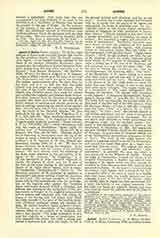

Agnesi, MARIA GAETANA, b. at Milan, May 16. 1718; d. at Milan, January 9, 1799, an Italian woman of remarkable intellectual gifts and attainments. Her father was professor of mathematics at Bologna. When nine years old she spoke Latin fluently, and wrote a discourse to show that liberal studies were not unsuited to her sex: “Oratio qua ostenditur artium liberalium studia femineo sexu neutiquam abhorrere”. This was printed at Milan in 1727. She is said to have spoken Greek fluently when only eleven years old, and at thirteen she had mastered Hebrew, French, Spanish, German, and other languages. She was called the “Walking Polyglot”. Her father assembled the most learned men of Bologna at his house at stated intervals, and Maria explained and defended various philosophical theses. A contemporary, President de Brosses, in his “Lettres sur l’Italie” (I, 243), declares that conversation with the young girl was intensely interesting, as Maria was attractive in manner and richly endowed in mind. So far from becoming vain over her success, she was averse to these public displays of her phenomenal learning, and at twenty years of age desired to enter a convent. Although this desire was not gratified, the meetings were discontinued, and she led a life of retirement, in which she devoted herself especially to the study of mathematics. The 191 theses which she defended were published in 1738, at Milan, under the title, “Propositiones Philosophicae”. Maria showed a phenomenal aptitude for mathematics. She wrote an excellent treatise on conic sections, and in her thirteenth year her “Instituzioni Analitiche” was published in two volumes (Milan, 1748), the first treating of the analysis of finite quantities; the second, the analysis of infinitesimals. This, the most valuable result of her labors in this field, was regarded as the best introduction extant to the works of Euler. It was translated into English by Colson of Cambridge, and into French by d’Antelmy, with the notes of Abbe Bossuet. The plane curve, known as versiera, is also called “the Witch of Agnesi”. Maria gained such reputation as a mathematician that she was appointed by Benedict XIV to teach mathematics in the University of Bologna, during her father’s illness. This was in 1750, and two years later her father died. Maria then devoted herself to the study of theology and the Fathers of the Church. Her long aspirations to the religious life were destined to be gratified, for after acting for some years as director of the Hospice Trivulzio of the Blue Nuns in Milan, she joined the order and died a member of it, in her eighty-first year.
JOHN J. A’ BECKET.

